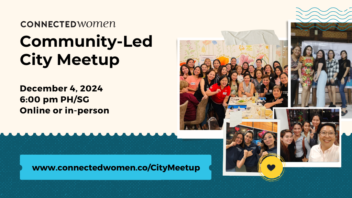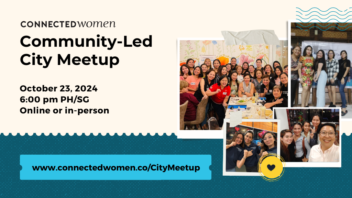Are You Ignoring Your Greatest Content Creation Resource? Part 1
 Contributed by
Andrea Edwards
June 16, 2016
Contributed by
Andrea Edwards
June 16, 2016

Every time I meet with a new company to talk about ramping up their content marketing efforts, the biggest challenge identified is being able to create enough content. So I ask about employees contributing content and if there is a process in place to welcome (and even reward) that. In 99 percent of cases, the answer is no (beyond the senior executives), we do not do that. And I say, why not?
There are typically two responses, and they are linked to time or trust:
- “Everyone is so busy; we can’t add this on top of their already packed schedules.”
- “But how can we guarantee that they will create content that is aligned to our business and core message?”
Let’s take a step back. User Generated Content (UGC) is something most businesses are obsessing over today, with many marketing leaders trying to work out how to integrate the amazing content that customers are creating into their marketing platforms. UGC is good – it’s good for everyone. Influencer marketing is also getting the limelight – especially in the B2B space. B2C influencer programs are well established, although many are struggling to quantify value.
But Employee Generated Content (EGC and I have no idea if this is already a term or if I’ve just made it up) is where truly amazing things can happen, because your employees are your greatest resource to scale your content marketing efforts today.
I’ve said it before and I’ll say it again: people trust people, not brands. So rather than just focusing on external influencers (which are definitely important), how about the internal influencers who know and (hopefully) love your company?
How Do You Get Started?
Find out who is already blogging, because the bigger your company, the more I can guarantee that someone in your business is already doing it. How do you find out? Start by checking out your employees on LinkedIn. Who’s active? Who’s blogging? Who’s understanding the importance of building their personal brand?
This is the start point. They’re already doing it, which makes them ideal recruits for your EGC program. The really important point: please don’t try to control them. They already know what they’re doing, so you need to trust them and watch the results come in. Don’t forget to encourage all employees to get behind these stars and help the content succeed. Equally, you need to make all employees aware that they are welcome to join this program, too.
Do I Need To Reward Or Incentivise Employees?
Speaking for myself, my personal brand has always been so critical to me, I don’t need to be rewarded, because I know it’s the greatest asset I have to support my ambitions. But, yes, small things matter, so why not set up a reward program? Gift certificates, $100/blog, monthly blog star awards, most-read blog awards, and so on.
Do I Need Rules And Training For Employees?
People who really understand personal branding don’t need rules. They know what they’re doing. However, this community is still quite rare, so yes, I would look at your existing social media rules and revise them for the modern day. A lot of the existing rules are too restrictive for today’s digitally connected world. Training should also be a critical part of this process, to help employees understand how to do this and become brilliant ambassadors for your business. I can help you with this.
What Resources Will You Need?
- You’ll need a chief editor to own the content platform and decide what gets featured, as well as to define company-wide themes employees can write about. This is similar to LinkedIn’s Influencer themes, such as #HowIHire #IfIwere22 #Thankyoumentor #SkillsGap #OutsideWork #BetheBoss.
- It would be wise to make editorial support available to your employees, especially those without the confidence to write or create content themselves. This can get them over the line.
- Provide free image-access to employees – they will love you for it. I use Shutterstock.
- Not everyone writes, so having design resources available is also smart. Additionally, the design team can re-create written content into other forms of content – PPTs for SlideShare, Infographics, etc.
- You’ll need a platform for the content (a content hub or a blog) and a team to upload content.
- You’ll need the social media team integrated into this team.
- And you’ll need a system or editorial calendar. You have two options:
1. If you establish a system where employees submit blogs they have already published (such as on LinkedIn) you can create the calendar as you go. Connected Women is an excellent example of this model for a multi-author community.
2. You can also ask employees to submit topic ideas and schedule a calendar. This model requires a lot more management than the first model, as you will often have to chase contributors to submit their blogs on time. With that said, my former company, Novus Asia,is a successful example of this model.
Look out for Part 2 in this series, where we talk about blogging in the company voice and the goals of your Employee Generated Content.
Did you enjoy this post? Please comment, like and share!










Sorry, the comment form is closed at this time.